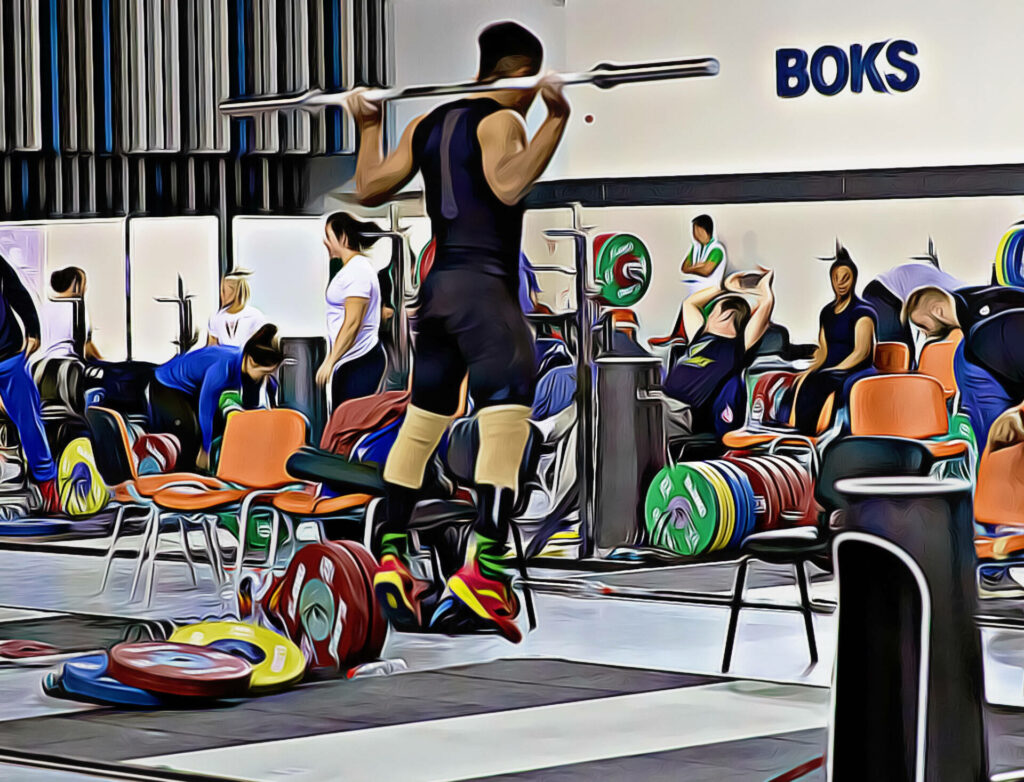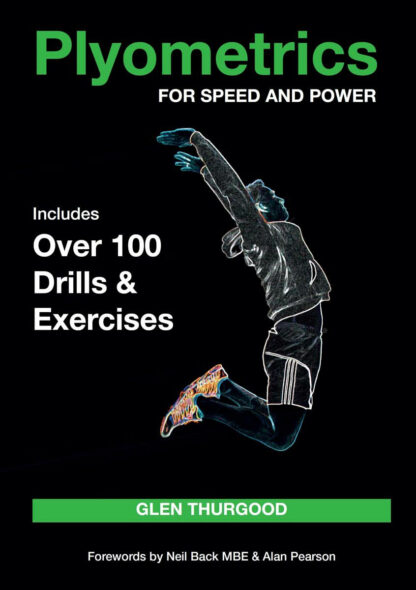STRENGTH SENSEI BOOKSHELF
Plyometrics for Speed and Power
“I feel the need, the need for speed” is a popular expression from Tom Cruise’s Top Gun that has become a motto of many sports and strength coaches. One training tool to help athletes develop speed, and its associated quality power, is plyometrics. The challenge is, “How do you incorporate plyometrics into an athlete’s training?” Plyometrics for Speed and Power by Glen Thurgood will show you.
Thurgood begins with a brief history of plyometrics, giving credit to the work of sports scientists such as track and field jump coach Yuri Verkhoshansky. Verkhoshansky did considerable research on improving athletic performance using a type of plyometrics called “shock training.” Shock training is distinguished from conventional plyometrics in that it involves a mechanical shock, such as by stepping a low box in a relaxed state and immediately rebounding upon landing. Verkhoshansky found that shock training enabled his athletes to achieve superior results to conventional jump training with a third less work.

News about Verkhoshanky’s research eventually spread to the US, and many strength coaches were excited to try it. They were often disappointed. Shock training is extremely stressful on the joints and connective tissues. If not prescribed correctly, not only will an athlete not improve their athletic abilities, but they can develop injuries, particularly overuse injuries such as tendinitis. As a result, many strength coaches abandoned plyometric training, focusing instead on getting their athletes stronger. As the popular motto goes, “All things being equal, the strong athlete will always win!”

Program Design for Athletic Performance
Thurgood is exceptionally qualified to teach coaches how to design plyometric workouts, having “bridged the gap” between academic knowledge and real-world experience. He is a physical therapist, has a master’s degree in strength and conditioning, and is co-owner of a performing facility in the United Kingdom.
Thurgood defines power as the ability to exert a maximal force in as short a time as possible, and power endurance is the rate force is applied over a period of time. He explains that all sports involve maximal power or power endurance and then goes into detail explaining the science of these athletic qualities.
Just as Charles R. Poliquin broke down strength training into specific loading parameters, including sets, reps, rest, and tempo. Thurgood also provides specific guidelines for performing both conventional plyometrics and shock training. Here is his progression of this type of training according to intensity:
- Jumps in place
- Standing jump
- Multiple hops and jumps
- Bounding
- Box drills
- Depth jumps
From here, Thurgood breaks down which plyometric drills develop a particular athletic skill, for example. For starting speed, he says the most specific plyometrics would be jumps in place, standing jumps, multiple jumps, and depth jumps. For change of direction, his exercise prescription changes to standing jumps, multiple jumps, box drills, and depth jumps.
Before moving on to plyometric program design, Thurgood exposes three popular myths about plyometrics, as follows:
Myth 1: Plyometric training is unsafe and dangerous for children.
Myth 2: Children who have not reached puberty should not perform plyometrics.
Myth 3: Plyometrics will cause bone growth plate damage.
From here, Plyometrics for Speed and Power provides photos and detailed descriptions of over 100 exercises, progressing from easiest to most intense. He further divides these exercises into beginner, intermediate, and advanced levels. And whereas volume in weight training is determined by the number of reps performed, Thurgood explains how the volume is measured in plyometrics, such as by the number of foot contacts for lower body plyometrics. Here’s a simple example:
Exercise/Drill Drill Type Reps Sets
High Skipping Bounding 8 2
Depth Jump to box with leap Depth Jump 4 3
Total foot contacts: 28
Now we come to one of the most valuable sections of the book, which is sport-specific workouts for several popular sports, such as basketball and soccer. It would have been nice if Thurgood covered more sports, but with the examples provided and the principles of training he covered, strength coaches should be able to design safe and effective workouts for their athletes. Thurgood concludes with a section on performance testing to help coaches determine the effectiveness of their workouts.
Plyometrics for Speed and Power is written for a general audience and gives the reader a good educational base to better understand more complex textbooks and articles about plyometric training. It is 192 pages but heavily illustrated such that it should only take the average reader about an hour to finish. If you’re interested in helping your athletes take the next step to achieve athletic superiority, reading Plyometrics for Speed and Power would be time well spent. (TSS)
[You can purchase Plyometrics for Speed and Power by Glen Thurgood in Kindle and paperback versions through Amazon.com.]
Lead photo by Viviana Podhaiski, LiftingLife.com
